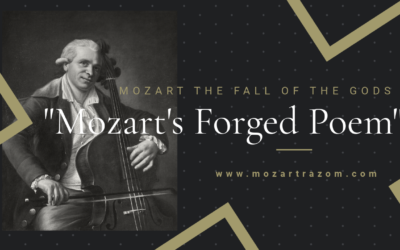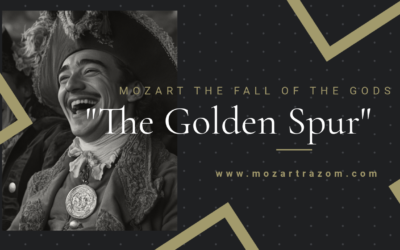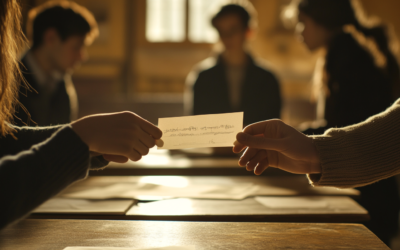Australian Scholars Confirm Mozart Catalogue Forgery
They support our findings on the falsification of Mozart’s works.
Professor Martin Jarvis of Darwin University, alongside forensic expert Professor Heidi H. Harralson, confirmed our long-held findings that Mozart’s personal catalogue is a forgery during his recent lecture The Mozart Scam. Forensic analysis continues to unravel the myths surrounding Mozart’s legacy.
Mozart: The Construction of a Genius
This enlightening volume deciphers the myriad of myths enshrouding Wolfgang Amadeus Mozart, shedding light on how portrayals of his genius have been manipulated for diverse purposes. It explores the transition of Mozart’s image from a means to mitigate Constanze’s financial distress to a representation of national valour and, subsequently, a commercial label, demonstrating how his myth has morphed through the ages.What dynamics post-1791 contributed to the moulding of Mozart’s lasting myth? This pivotal work by scholars Luca Bianchini and Anna Trombetta delves into biographical facts, musical compositions, and pertinent writings to unveil a disconcerting reality: the esteemed Mozart’s Thematic Catalogue, spanning February 9th, 1784, to November 15th, 1791, is an intricate forgery from the late 18th century.This revelation is corroborated by the scholarly paper ‘A Questionable Catalogue’, presented by the authors in October 2023 at the 21st International Conference of the Graphonomics Society at the University of Évora, Portugal.
"I am delighted that our research has provided evidence to support the proposition, made by Luca Bianchini and Anna Trombetta, that the Thematic Catalogue is not what it purports to be; we have concluded that it is a counterfeit document."
Professor Martin Jarvis
In an exciting development from Australia, Professor Martin Jarvis of Darwin University recently delivered a groundbreaking lecture titled The Mozart Scam, where he addressed the forensic investigation into the authenticity of Mozart’s handwriting. During this prestigious conference, Jarvis mentioned our research and praised our books, Mozart: The Fall of the Gods and Mozart: The Construction of a Genius, for shedding light on the myths surrounding Mozart’s legacy.
Jarvis’s lecture explored his collaborative work with forensic handwriting expert Professor Heidi H. Harralson of East Tennessee State University. Together, they have conducted an in-depth analysis of Mozart’s violin concertos, revealing that the dates of these works had been altered, and two of the concertos are not autographs by Mozart, as previously thought. This supports the findings in our earlier publications, confirming that many elements of Mozart’s legacy are based on false assumptions.
Their forensic analysis of the personal catalogue attributed to Mozart from 1784 to 1791 also confirmed what we have long argued—the catalogue is a forgery. These results, which align with our own research first presented in Mozart: The Fall of the Gods, are backed by independent studies conducted across Europe and beyond, including advanced computer data analysis from Prague.
This convergence of findings from both Europe and Australia only strengthens the case for a reevaluation of Mozart’s legacy, which has been inflated over time. As Jarvis and his colleagues continue to scrutinise the historical evidence with forensic rigour, more truths about Mozart’s life and works are being revealed, supporting the conclusions we reached years ago.
You May Also Like
#3 Leopold Mozart’s Literary Theft
Hidden within the Mozarteum’s archives lies a poem that has long been hailed as a tribute to the young Mozart children. But behind this innocent façade is a story of deception, literary theft, and one father’s ambition to rewrite history.
#4 The Golden Spur
While often portrayed as a prestigious award, the Golden Spur (Speron d’Oro) granted to Mozart in 1770 was far from a reflection of his musical genius. In this article, we delve into the true story behind this now-forgotten honour, its loss of value, and the role of Leopold Mozart’s ambitions in securing it.
Mozart Unmasked: The Untold Story of His Italian Years
Explore the lesser-known side of Wolfgang Amadé Mozart’s early years in Italy. ‘Mozart in Italy’ unveils the complexities, controversies, and hidden truths behind his formative experiences, guided by meticulous research and rare historical documents. Delve into a story that challenges the traditional narrative and offers a fresh perspective on one of history’s most enigmatic composers.
Another Example of Borrowed Genius
The myth of Mozart’s genius continues to collapse under the weight of his reliance on others’ ideas, with Leopold orchestrating his son’s supposed early brilliance.
A Genius or a Patchwork?
The genius of Mozart had yet to bloom, despite the anecdotes passed down to us. These concertos were not the work of a prodigy, but a collaborative effort between father and son, built on the music of others.
Myth, Reality, and the Hand of Martini
Mozart handed over Martini’s Antiphon, not his own, avoiding what could have been an embarrassing failure. The young prodigy had a lot to learn, and much of what followed was myth-making at its finest.







